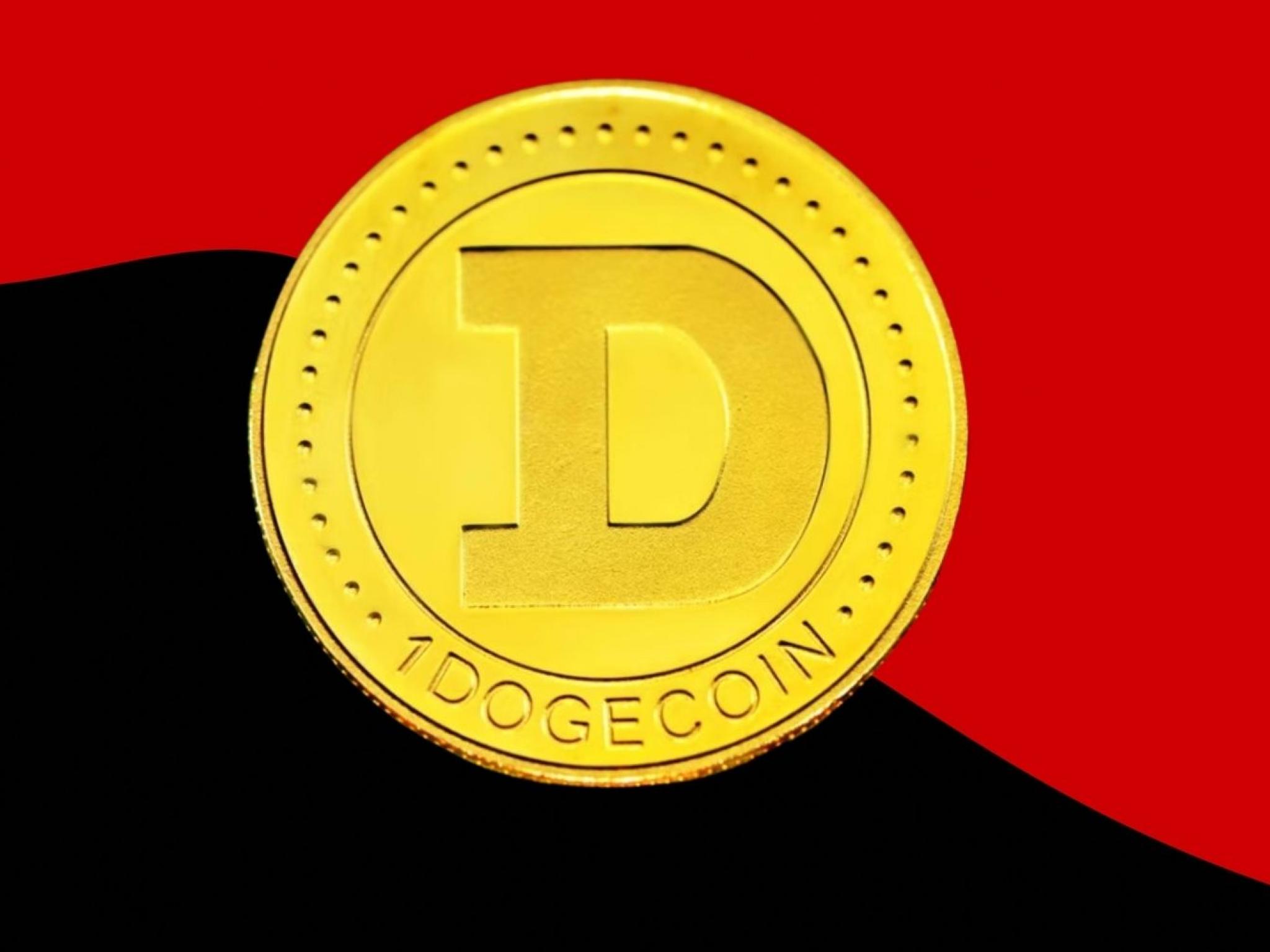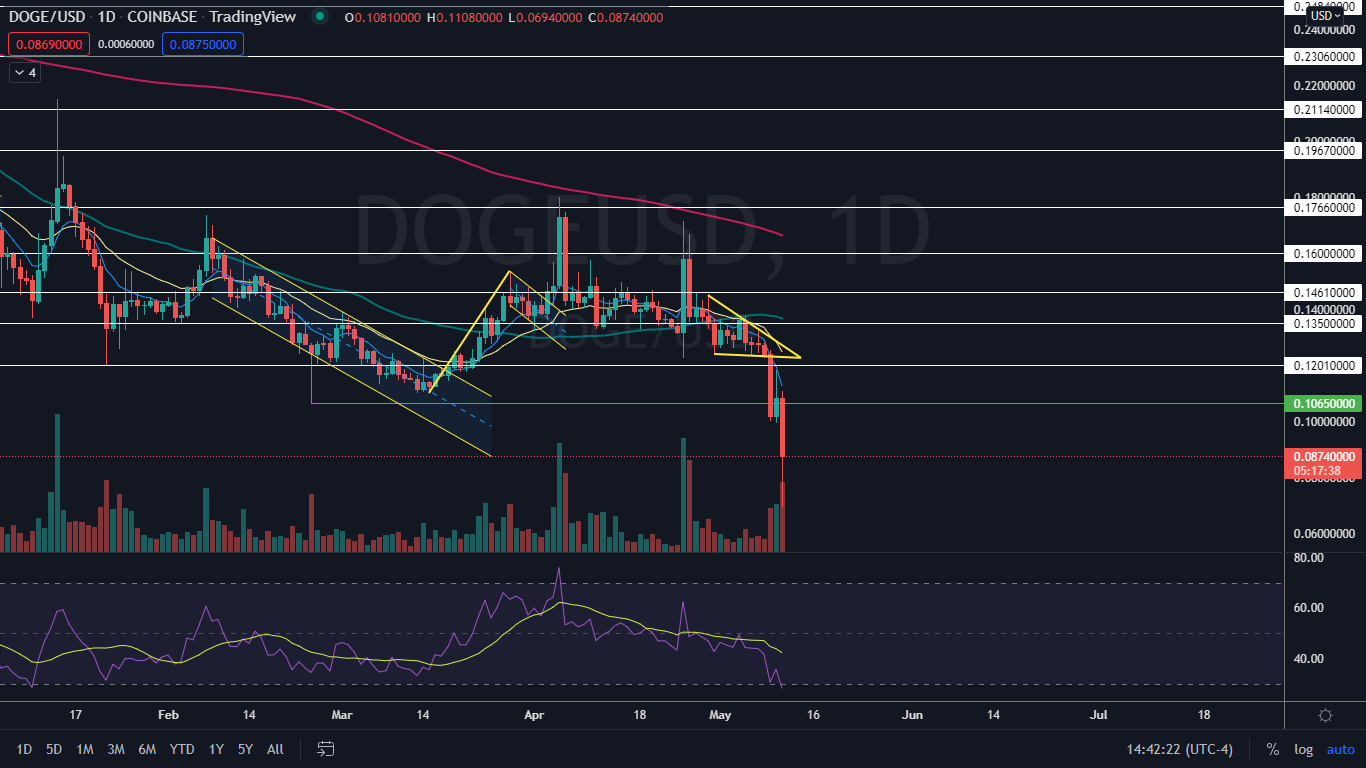
It was a rough morning for Dogecoin (CRYPTO: DOGE), as the crypto dropped about 32% between 8:15 a.m. and 8:45 a.m. on Wednesday before beginning to recoup some of the losses. By early afternoon, Dogecoin was trading down about 20% lower.
The fall was an exaggerated reaction to an overall long-term decline in not only Dogecoin but the general markets and cryptocurrency sector, which has seen the S&P 500 and apex crypto Bitcoin (CRYPTO: BTC) fall 14% and 37%, respectively, since March 29.
Dogecoin’s plunging price is a continuation of the downtrend the crypto confirmed on Monday, when Dogecoin broke down bearishly from a descending triangle pattern on the daily chart.
A downtrend occurs when a stock or crypto consistently makes a series of lower lows and lower highs on the chart.
The lower lows indicate the bears are in control, while the intermittent lower highs indicate consolidation periods.
Traders can use moving averages to help identify a downtrend, with descending lower timeframe moving averages (such as the eight-day or 21-day exponential moving averages) indicating the stock or crypto is in a steep shorter-term downtrend and descending longer-term moving averages (such as the 200-day simple moving average) indicating a long-term downtrend.
A stock or crypto often signals when the lower low is in by printing a reversal candlestick such as a doji, bullish engulfing or hammer candlestick. Likewise, the lower high could be signaled when a doji, gravestone or dragonfly candlestick is printed. Moreover, the lower lows and lower highs often take place at resistance and support levels.
In a downtrend the "trend is your friend" until it’s not and in a downtrend, there are ways for both bullish and bearish traders to participate in the stock:
- Bearish traders who are already holding a position in a stock or crypto can feel confident the downtrend will continue unless the crypto makes a higher high. Traders looking to take a position in a crypto trading in a downtrend can usually find the safest entry on the lower high.
- Bullish traders can enter the trade on the lower low and exit on the lower high. These traders can also enter when the downtrend breaks and the crypto makes a higher high, indicating a reversal into an uptrend may be in the cards.
Want direct analysis? Find me in the BZ Pro lounge! Click here for a free trial.
The Dogecoin Chart: Dogecoin’s most recent lower high in the downtrend was printed on Tuesday at $0.118 and the most recent confirmed lower low was formed at the 10-cent level the day prior. On Wednesday, Dogecoin looked to be forming a hammer candlestick on the daily chart, which could indicate the next lower low is in, and a bounce will occur on Thursday.
- A spike upwards is also likely to come because Dogecoin’s relative strength index (RSI) is measuring in at about 28%. When a stock or crypto’s RSI falls below the 30% mark, it becomes oversold, which can be a buy signal for technical traders looking to catch a bounce.
- The move lower on Wednesday was happening on higher-than-average volume, which indicates fear has entered into the crypto. At press time, Dogecoin’s volume on Coinbase was measuring in at about 828 million, compared to the 10-day average of 299.82 million.
- If Dogecoin doesn’t bounce up to print at least another lower high on Thursday, the next most likely scenario is that the crypto will print an inside bar to consolidate the sharp drop. If that happens, both bullish and bearish traders can watch for a break of Wednesday’s mother bar on Thursday or Friday to gauge future direction.
- Dogecoin has resistance above at 10 cents and the 12-cent mark, and support below at 7 cents and the 5-cent area.

See Also: Is Dogecoin Worth Buying On Crash?







